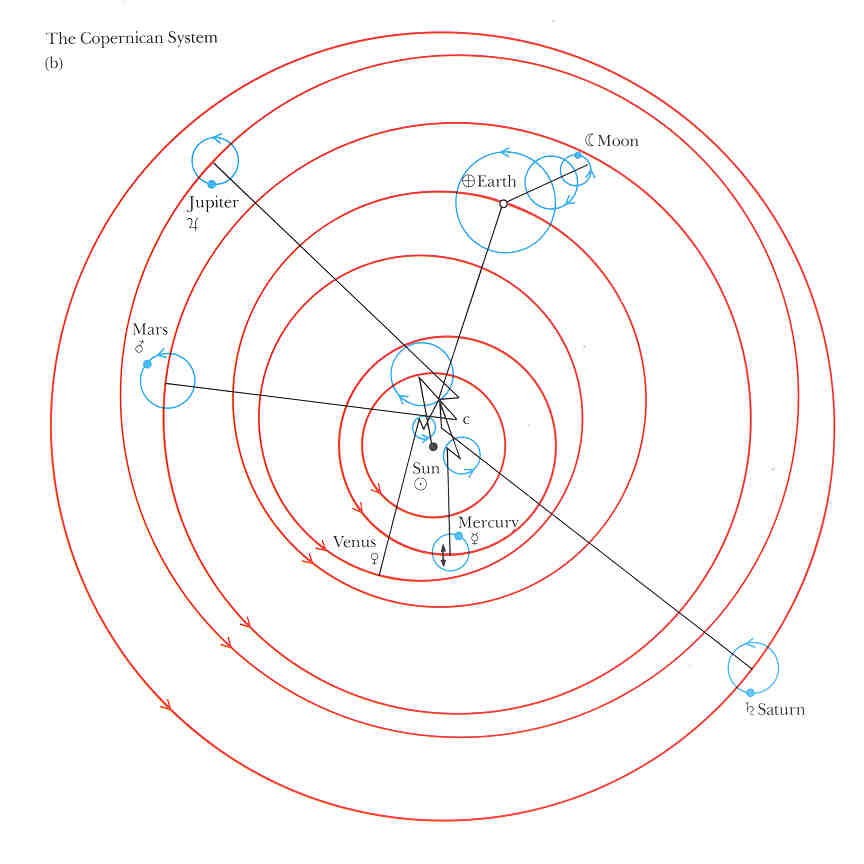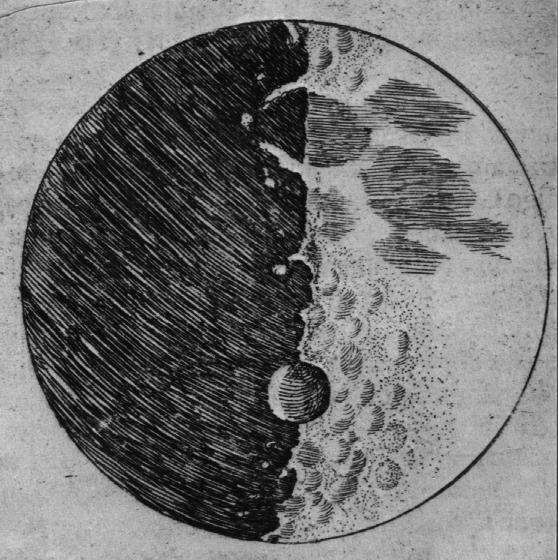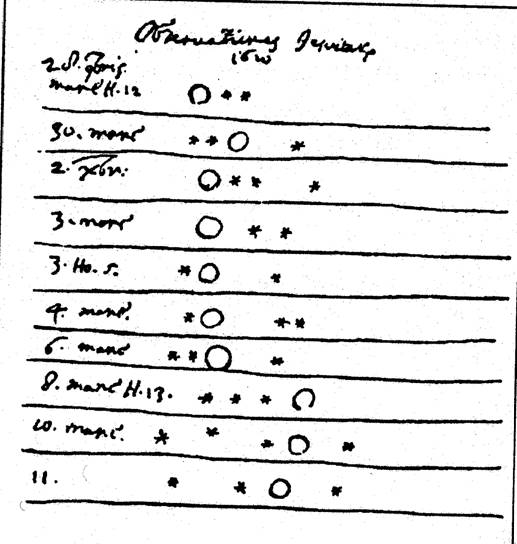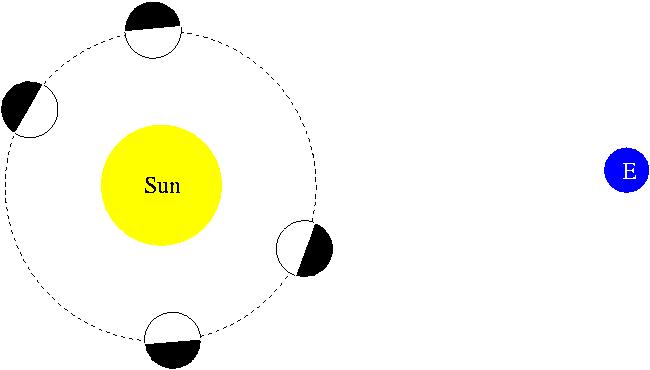In Class:
Question to Ponder
The Sun and the Moon have very nearly the same angular size when
viewed from the Earth. (This is in part why solar eclipses are so short
in duration and so spectacular.) From this information, we can
conclude that
- a) the Sun and Moon have the same physical size.
- b) the Sun and the Moon are the same distance away.
- c) the ratio of each object's size to its distance is the same.
- d) none of the above.
Reasons Geocentrism Lasted so Long
- It made a good story; easy to understand
- Didn't contradict everyday experience (THE EARTH DOESN'T MOVE!)
- More accuracy wasn't really needed
The Sociopolitical Environment Changes During the Renaissance
- Rise of affluent European nation-states
- Longer distance trade; navigation issues
- Exploration of New World, sea routes to Asia
- Weakening of Church control over academia (especially in northern
Europe)
Nicolaus Copernicus (1474-1543)
- Father of modern heliocentric theory
- Religious administrator by trade, but deeply interested in
mathematics and astronomy
- Tried to reconcile his own observations with Ptolemaic system, but
without luck
- Considered a heliocentric system as an alternative
- Published De Revolutionibus orbium coelestium,
On the Revolutions of the Celestial Orbs
- His heliocentric theory was no less complex and convoluted than
Ptolemy's geocentric model:


- Moreover, it didn't even predict planetary positions any better
than Ptolemy's!
Pros and Cons of the Copernican Heliocentric Model
- Cons:
- Didn't predict planetary positions any better than geocentric model
- Parallax caused by the Earth's revolution around the Sun should
be observed
- Aristotelean physics says that the Earth cannot be moving
- Pros:
- The Sun is biggger than the Earth (Aristarchus)
- The Earth is just like the other planets (Galileo)
- Not everything orbits the Earth (Galileo)
The Parallax Problem
- If the Earth moves around the Sun, we should see "turnings and
passings of the fixed stars," e.g., parallax shifts over the course of
the year.
- Lookit the special parallax
web page to see how one mght observe parallax for nearby stars.
- In fact we do observe parallax shifts for nearby stars, but the
"nearby" stars are so far away that the shift was completely
imperceptible for pre-telescope (as well as 200 years of
post-telescope) astronomers.
- Parallax was not conclusively measured until 1838, and only then
because telescope technology had advanced enough to detect the tiny
shifts.
Galileo's Astronomical Reasons to Believe in Heliocentrism
- Galileo was the first to use a telescope to systematically study
the sky.
- Detected sunspots -- the Sun is not pure and pristine.
- Discovered mountains and craters on the Moon -- again not a
pristine or perfect environment.

- Detected Jupiter's Moons -- not everything orbits the Earth.

These are Galileo's own notes of the movement of the "Medicean Stars"
(a.k.a. the moons of Jupiter) relative to Jupiter from night to night.
- Detected phases of Venus -- concludes from patterns of phases
that Venus must orbit the Sun, not the Earth. The most important
observations here is that Venus appears in both crescent and gibbous
phases when close (in angle) to the Sun. This can only happen if
Venus orbits the Sun.

|
![]()




